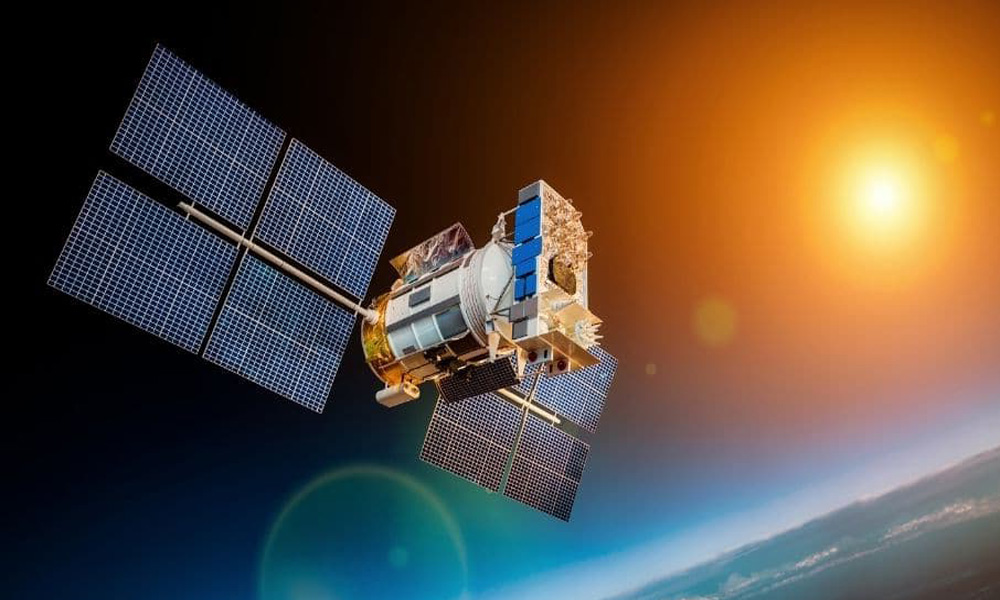
Through the careful design of the hole transport material and the use of novel spectroscopy techniques and ultrathin sapphire substrates, Australian researchers have discovered that thermal vacuum annealing can restore the efficiency of damaged perovskite solar cells caused by proton radiation.
The original efficiency of perovskite solar cells damaged by proton radiation in low-earth orbit can be fully restored through annealing in a thermal vacuum, as demonstrated by Australian researchers.
The delivery of photo-generated positive charges to the cell’s electrode is made possible by the careful design of the hole transport material (HTM).
The utilization of thermal admittance spectroscopy (TAS) and deep-level transient spectroscopy (DLTS) to detect defects in proton-irradiated and thermal-vacuum recovered perovskite solar cells (PSCs) is a groundbreaking new research using ultrathin sapphire substrates that are compatible with high power-to-weight ratios, making them suitable for commercial use.
Due to their low manufacturing cost, high efficiency, and radiation hardness, light-weight PSCs are a viable option for powering low-cost space hardware.
Professor Anita Ho-Baillie, an Associate Investigator with the ARC Centre of Excellence in Exciton Science, led a team at the University of Sydney who used ultrathin radiation-resistant and optically transparent sapphire substrates of 0.175mm to take advantage of the high power-to-weight ratios.
The cells were exposed to a rapid scanning pencil beam of seven mega-electron-volts (MeV) protons using a high-energy heavy ion microprobe at the Centre for Accelerator Science (CAS) in ANSTO, which imitated the proton radiation exposure experienced by solar cell panels while orbiting the earth on a low-earth orbit (LEO) for tens to hundreds of years.
The cells that have a popular HTM and a popular dopant within their HTM are less tolerant to radiation compared to their competitors. The HTM in question is the compound 2,2′,7,7′-Tetrakis[N,N-di(4-methoxyphenyl)amino]-9,9′-spirobifluorene (Spiro-OMeTAD), while the dopant is lithium bis(trifluoromethanesulfonyl)imide (LiTFSI).
The team discovered that the surface of the perovskite photo-absorber can be damaged by defects caused by fluorine diffusion from the LiTFSI induced by proton radiation, which could lead to cell degradation and loss of efficiency over time.
The team discovered that cells lacking Spiro-OMeTAD and LiTFSI did not undergo fluorine diffusion-related damage and that proton-radiation degradation could be reversed by heat treatment in vacuum. These radiation-resistant cells were composed of Poly[bis(4-phenyl) (2,5,6-trimethylphenyl) (PTAA) or a combination of PTAA and 2,7-Dioctyl[1]benzothieno[3,2-b][1]benzothiophene (C8BTBT) as the hole transport material, with tris(pentafluorophenyl)borane (TPFB) as the dopant.
Reference: “Effect of Hole Transport Materials and Their Dopants on the Stability and Recoverability of Perovskite Solar Cells on Very Thin Substrates after 7 MeV Proton Irradiation” by Shi Tang, Stefania Peracchi, Zeljko Pastuovic, Chwenhaw Liao, Alan Xu, Jueming Bing, Jianghui Zheng, Md Arafat Mahmud, Guoliang Wang, Edward Dominic Townsend-Medlock, Gregory J. Wilson, Girish Lakhwani, Ceri Brenner, David R. McKenzie and Anita W. Y. Ho-Baillie, 22 May 2023, Advanced Energy Materials.